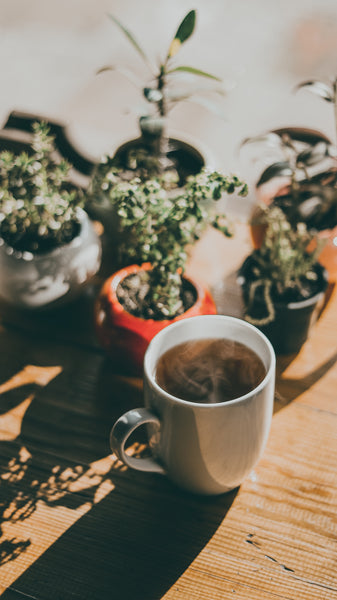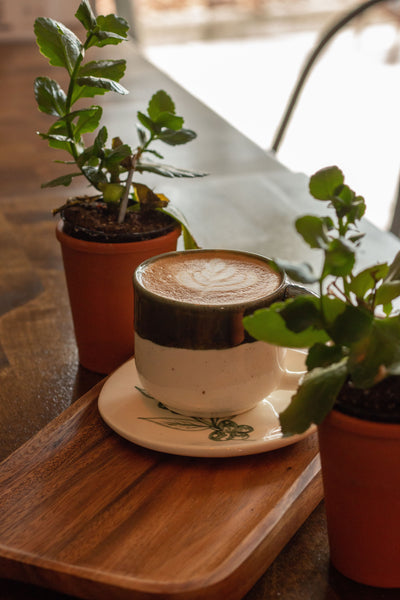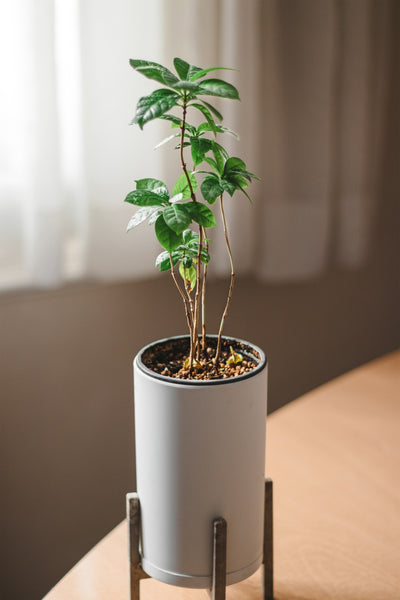
Gardening and Plant Care
Gardening and Plant Care
Gardening enthusiasts and environmentally conscious individuals are constantly seeking sustainable practices to nurture their plants and gardens. A practice that has gained traction in recent years is the utilization of leftover coffee grounds as a natural fertilizer, offering a sustainable and eco-friendly solution for plant care. Furthermore, delving into the cultivation of coffee plants themselves can inspire a captivating hobby that intertwines gardening with sustainability.
Harnessing the Potential of Leftover Coffee Grounds
The discarded remnants of a morning cup of coffee possess hidden potential as a nutrient-rich fertilizer for plants. Coffee grounds, when used appropriately, can benefit plant growth and soil health in several ways:
Nutrient Boost: Coffee grounds contain essential nutrients such as nitrogen, potassium, phosphorus, and trace minerals, acting as a natural fertilizer when added to soil. These nutrients contribute to healthier plant growth and vibrant foliage.
Improving Soil Texture: Coffee grounds help improve soil structure by adding organic matter, enhancing drainage in clay soils and water retention in sandy soils. This fosters a healthier root environment for plants.
pH Regulation: Despite their acidic nature, coffee grounds, when composted or mixed with other organic materials, tend to neutralize and act as a mild acidic amendment, beneficial for acid-loving plants like azaleas and rhododendrons.

Utilizing Leftover Coffee Grounds as Fertilizer
Repurposing coffee grounds from your morning brew into a fertilizer is a simple and sustainable practice. Here's a step-by-step guide on how to use coffee grounds effectively in gardening:
Collect the Coffee Grounds: Accumulate used coffee grounds from your daily coffee routine. Avoid using large quantities at once; instead, gradually incorporate them into your gardening practices.
Composting: Mix coffee grounds with other organic matter in a compost pile or bin. This helps balance the nutrient composition and facilitates decomposition, creating nutrient-rich compost over time.
Direct Application: Apply coffee grounds directly to the soil around plants. Avoid forming large clumps; instead, spread them evenly and mix gently into the topsoil to prevent mold growth and allow for gradual decomposition.
Mulching: Use coffee grounds as a mulch layer around plants. This helps retain moisture, suppress weeds, and gradually release nutrients into the soil as they break down.
Rinse and Repurpose: After brewing coffee, rinse off the coffee grounds to remove excess coffee residues. This ensures a more balanced application and prevents any adverse effects on plants.

Exploring Coffee Plant Cultivation: A Gardening Adventure
Delving into the cultivation of coffee plants can be a fascinating and rewarding endeavor for gardening enthusiasts. Growing coffee plants not only provides a deeper understanding of plant care but also offers a unique connection to the origin of one's favorite beverage. Here's a guide to kickstart your

coffee plant cultivation journey:
Choosing the Right Variety: Opt for coffee plant varieties suitable for cultivation at home, such as Coffea arabica or Coffea canephora (Robusta). Consider factors like climate and space requirements when selecting the plant.
Ideal Growing Conditions: Coffee plants thrive in well-draining, acidic soil with consistent moisture and indirect sunlight. Maintain a temperature range between 60°F to 70°F (15°C to 21°C) for optimal growth.
Planting and Care: Plant coffee seeds in a pot with suitable soil and ensure regular watering without waterlogging. Prune the plant to encourage branching and apply a balanced fertilizer during the growing season.
Patience and Persistence: Growing coffee plants requires patience, as they can take several years to produce fruit (cherries) that contain coffee beans. Regular care, proper pruning, and patience are key to success.

Embracing Sustainability in Gardening Practices
The synergy between gardening, sustainable practices, and coffee grounds as fertilizers aligns with the principles of eco-conscious living. By incorporating leftover coffee grounds into gardening routines and cultivating coffee plants, individuals engage in sustainable gardening practices that benefit both plants and the environment.
Reducing Waste: Repurposing coffee grounds as fertilizers reduces organic waste and diverts it from landfills, contributing to a more sustainable waste management cycle.
Promoting Soil Health: The use of organic materials like coffee grounds enhances soil fertility, promotes microbial activity, and reduces the need for synthetic fertilizers, fostering a healthier ecosystem for plants.
Connecting with Nature: Engaging in gardening, whether using coffee grounds as fertilizers or cultivating coffee plants, establishes a deeper connection with nature and encourages appreciation for sustainable living practices.

Conclusion: Nurturing Plants with Coffee Grounds and Cultivating Coffee Plants
The utilization of leftover coffee grounds as a natural fertilizer and the cultivation of coffee plants present an exciting opportunity to merge gardening with sustainable practices. These practices not only contribute to the well-being of plants but also foster a sense of environmental stewardship and a deeper connection to the natural world.
As gardening enthusiasts embrace the art of using coffee grounds in plant care and explore the cultivation of coffee plants, they embark on a journey that intertwines their love for gardening with a passion for sustainability. It's a journey that celebrates the circularity of nature, transforming leftover coffee grounds into nourishment for thriving plants while fostering a deeper appreciation for the wonders of the natural world.

Недропользование — это направление деятельности, связанный с изучением и использованием недр.
Оно включает поиск природных ресурсов и их рациональное использование.
Данная сфера регулируется нормативными актами, направленными на охрану окружающей среды.
Эффективное управление в недропользовании помогает сохранять ресурсы.
общество экспертов России по недропользованию
оэрн on
На данном ресурсе представлено множество полезных материалов.
Пользователи отмечают, что ресурс помогает быстро находить нужные сведения.
Контент постоянно пополняется, что делает сайт надёжным для изучения.
Многие считают, что организация разделов интуитивно ясна и позволяет сэкономить время.
Широкий выбор материалов делает ресурс универсальным для широкой аудитории.
Также отмечается, что материалы подготовлены качественно и читаются без труда.
Сайт помогает получать новые сведения благодаря подробным статьям.
В итоге, этот ресурс можно назвать удобным местом для изучения важных тем для всех пользователей.
https://carhunter.su
NathanMut on
Discount codes are dedicated combinations of alphanumeric characters that provide exclusive discounts.
They are frequently offered by brands to encourage shopping.
Such codes allow users to lower their expenses when placing an order.
Many people appreciate promo codes because they help stretch the budget.
https://dosweeps.com/promotions/go-go-gold-100-cashback-on-day-1-losses
Most platforms share these codes through promotional campaigns.
Using them is usually easy and requires only entering the code during checkout.
Promo codes also help companies boost activity by offering temporary bonuses.
Overall, they serve as a practical feature for anyone who wants to reduce spending.
Matthewerofs on
This online platform contains a lot of captivating and useful information.
On the website, you can learn about different articles that help you learn new things.
Visitors will enjoy the content shared through this platform.
Every category is organized clearly, making it pleasant to use.
The articles are relevant and engaging.
It’s possible to find recommendations on many areas.
If you want to find practical advice, this site has a lot to offer.
In general, this website is a reliable place for those who love learning.
https://pz-rlp.de/
NathanMut on
Получение вида на жительство за границей становится всё более важным среди жителей России.
Такой шаг открывает широкие горизонты для жизни.
Второй паспорт помогает легче пересекать границы и получать доступ к другим странам.
Также подобное решение может повысить уровень личной безопасности.
Паспорт Антигуа и Барбуда
Многие россияне рассматривают ПМЖ как инструмент защиты.
Получив ВНЖ или второй паспорт, человек легко открыть бизнес за рубежом.
Разные направления предлагают индивидуальные возможности получения гражданства.
Именно поэтому идея второго паспорта становится всё более значимой для тех, кто планирует развитие.
Peterthype on
Современные боты для поиска информации становятся всё более удобными.
Они позволяют собирать публичные данные из социальных сетей.
Такие решения подходят для исследований.
Они способны оперативно обрабатывать большие объёмы информации.
бот глас бога
Это позволяет создать более точную картину событий.
Многие системы также предлагают инструменты фильтрации.
Такие боты популярны среди исследователей.
Эволюция технологий превращает поиск информации более точным и наглядным.
RussellCousa on
Нейросетевые поисковые системы для анализа данных становятся всё более востребованными.
Они позволяют собирать открытые данные из разных источников.
Такие боты используются для аналитики.
Они способны оперативно систематизировать большие объёмы контента.
бот «глаз бога»
Это помогает получить более полную картину событий.
Отдельные системы также обладают инструменты фильтрации.
Такие боты популярны среди исследователей.
Развитие технологий делает поиск информации эффективным и наглядным.
MichaelBub on
Creative photography often focuses on highlighting the beauty of the natural shape.
It is about expression rather than appearance.
Professional photographers use natural tones to create mood.
Such images capture delicacy and character.
https://xnudes.ai/
Every shot aims to show emotion through movement.
The intention is to portray human beauty in an artful way.
Observers often admire such work for its depth.
This style of photography unites art and sensitivity into something truly expressive.
LeonardKedly on
Выбор психолога — важный процесс на пути к улучшению психологического здоровья.
Для начала стоит понять свои цели и запросы от работы с экспертом.
Полезно изучить подготовку и специализацию специалиста.
Отзывы других пациентов могут подсказать сделать выбор более осознанным.
https://lukasvaei07418.wikiitemization.com/5253089/%D0%94%D0%B5%D1%82%D1%81%D0%BA%D0%B8%D0%B9_%D0%BF%D1%81%D0%B8%D1%85%D0%B8%D0%B0%D1%82%D1%80_%D0%9C%D0%BE%D1%81%D0%BA%D0%B2%D0%B0_%D0%A6%D0%B5%D0%BD%D1%82%D1%80_%D0%BC%D0%B5%D0%BD%D1%82%D0%B0%D0%BB%D1%8C%D0%BD%D0%BE%D0%B3%D0%BE_%D0%B7%D0%B4%D0%BE%D1%80%D0%BE%D0%B2%D1%8C%D1%8F
Также нужно проверить методы, которыми оперирует психолог.
Первая консультация помогает понять, насколько есть доверие общения.
Важно осознавать тариф и режим приёма (например, онлайн).
Правильный выбор специалиста поможет ускорить личный рост.
ErnieSaUrn on
В приложении Telegram появилась дополнительная функция — внутренние звёзды.
Они предназначены для мотивации создателей.
Каждый подписчик имеет возможность отправлять звёзды создателям.
матч звезд купить
Звёзды обмениваются в доход.
Это удобный способ выразить благодарность.
Попробуйте опцию уже немедленно.
CarlosUnces on
Cargo delivery from China is trustworthy and efficient.
Our company delivers tailored solutions for enterprises of any size.
We manage all transportation processes to make your workflow uninterrupted.
delivery of groupage cargo from china by air
With scheduled shipments, we ensure timely dispatch of your consignments.
Clients value our experienced team and competitive rates.
Choosing us means confidence in every shipment.
VernonFrorn on
Современные системы отслеживания рабочего времени помогают оптимизировать оперативного управления.
Удобный интерфейс сокращает неточности в планировании графиков.
Руководителям легче контролировать загрузку сотрудников с детализацией.
https://songdolandmarkcity.com/tech/how-to-increase-employee-engagement/
Сотрудники пользуются гибким графиком для отслеживания .
Внедрение таких систем существенно упрощает управленческие задачи без лишних затрат .
Это гарантирует прозрачность при распределении задач, повышая лояльность сотрудников.
KevinTrord on